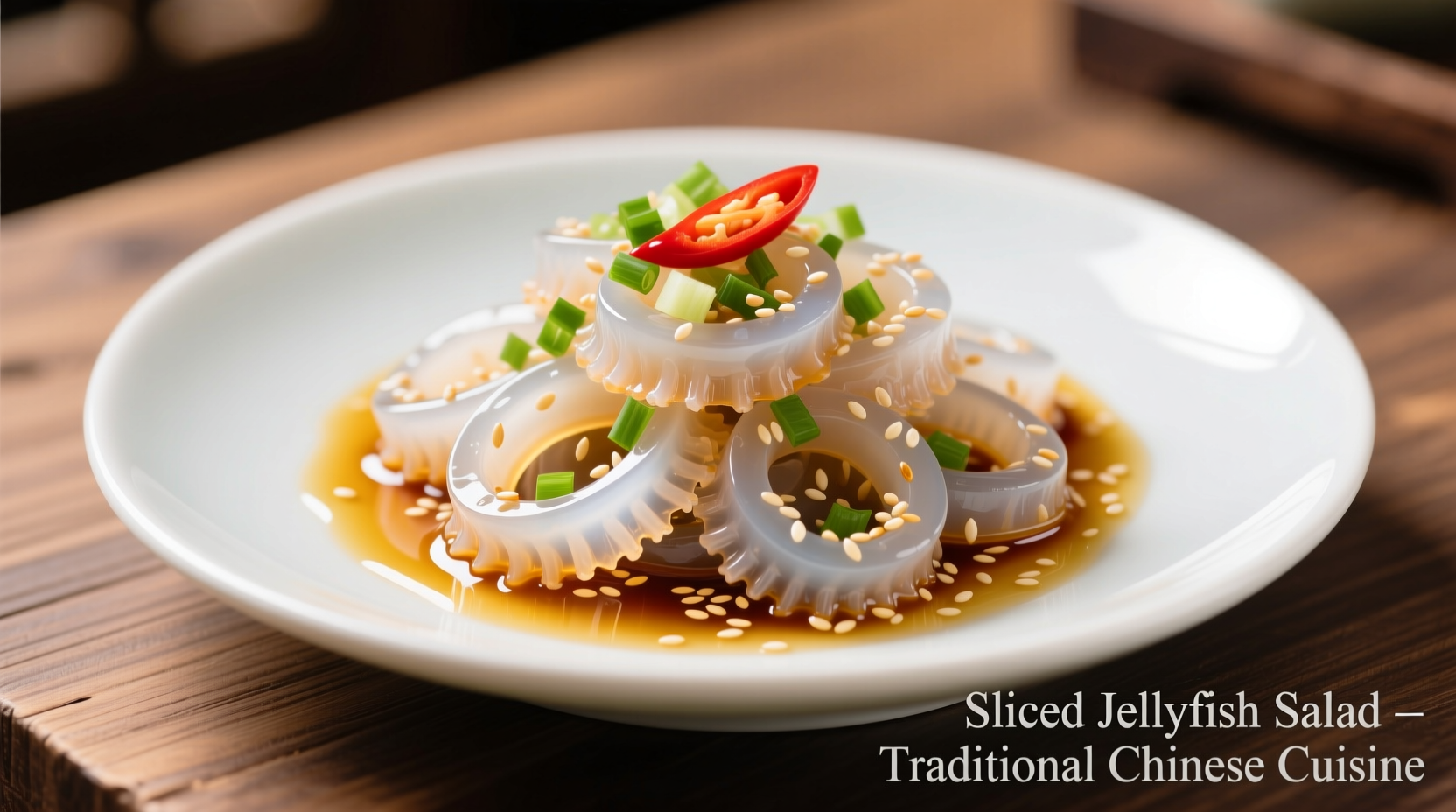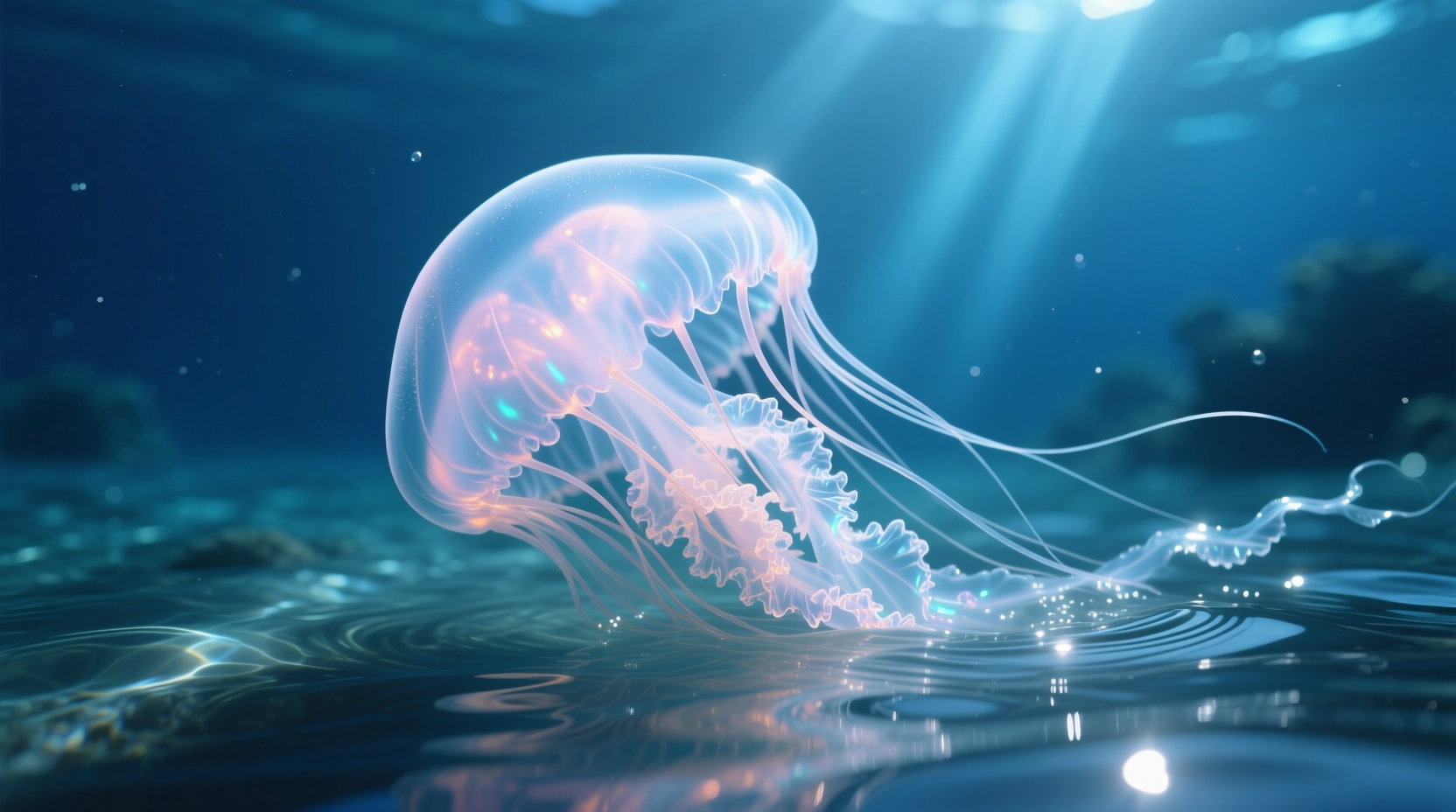Understanding Jellyfish as Culinary Ingredient
Despite its unusual appearance, jellyfish has been part of human diets for over 1,700 years, particularly in Chinese, Japanese, and Korean cuisines. According to NOAA's seafood processing guidelines, only certain species like Rhopilema esculentum and Stomolophus meleagris are safe for consumption after proper processing. The culinary use of jellyfish represents one of the most fascinating examples of how traditional food preparation methods transform potentially dangerous ingredients into delicacies.
Texture: The Defining Characteristic
When people ask what does jellyfish taste like, they're often surprised to learn that texture matters more than flavor. The unique mouthfeel is what makes jellyfish distinctive in Asian cuisine. After proper preparation, it develops a satisfying crunch that maintains its structure even when dressed with sauces.
| Texture Characteristic | Description | Common Comparison |
|---|---|---|
| Crispness Level | Firm yet yielding with a clean snap | Water chestnut or jicama |
| Mouthfeel | Smooth surface with slight resistance | Cucumber skin |
| After Chew | Cleansing, refreshing sensation | Sea grape or mild seaweed |
Flavor Profile Explained
The actual taste of jellyfish is remarkably neutral—almost like the ocean's distilled essence. When properly processed, it carries a subtle saltiness without any fishy aftertaste. This makes it an ideal canvas for dressings. In traditional Chinese preparations, jellyfish is typically served with:
- Light sesame oil
- Vinegar-based dressings
- Chili peppers for heat
- Garlic and ginger accents
These seasonings penetrate the jellyfish's structure, creating a harmonious blend where the jellyfish provides texture while the seasonings deliver flavor—answering the common question of what does jellyfish taste like in chinese food specifically.
The Critical Processing Timeline
Raw jellyfish cannot be eaten directly—it requires careful processing to become safe and palatable. The traditional method, documented by the Food and Agriculture Organization (FAO), follows this timeline:
- Day 1: Immediate salting after harvest to prevent decomposition
- Days 2-15: Alum and salt curing process (critical for texture development)
- Day 16-30: Rehydration and desalting in multiple water changes
- Day 31: Final texture evaluation and preparation for market
This meticulous process transforms the initially soft, gelatinous creature into the crisp delicacy enjoyed in restaurants. Improper processing results in either rubbery texture or dangerous levels of residual toxins—addressing the safety concerns behind is jellyfish edible safely.

Regional Culinary Applications
Jellyfish preparation varies significantly across Asian cuisines, creating different taste experiences:
- Chinese cuisine: Typically served cold as an appetizer with vinegar, sesame oil, and chili—what does jellyfish taste like in chinese food is characterized by this bright, acidic profile
- Korean cuisine: Often included in seafood pancakes or kimchi for added texture contrast
- Japanese cuisine: Served as kurage in salads with ponzu dressing, emphasizing clean, subtle flavors
- Southeast Asian variations: Incorporated into fresh spring rolls or noodle salads with citrus dressings
These regional differences demonstrate how the same base ingredient can yield distinct culinary experiences depending on preparation method and accompanying flavors—answering the question what does jellyfish taste like with nuanced specificity.
Practical Considerations for First-Time Tasters
If you're wondering does jellyfish taste fishy, rest assured that properly prepared jellyfish shouldn't have any fishy characteristics. When selecting jellyfish dishes:
- Look for dishes where it's served as a cold appetizer rather than cooked extensively
- Expect a refreshing, clean taste rather than strong seafood flavors
- Choose restaurants specializing in Chinese or Korean cuisine for authentic preparation
- Be aware that pre-packaged jellyfish salad from grocery stores often has a stronger vinegar taste than restaurant versions
For those interested in where to buy edible jellyfish, Asian grocery stores typically carry pre-processed jellyfish in the refrigerated seafood section, usually labeled as "salted jellyfish" requiring rehydration before use.
Safety and Quality Indicators
While jellyfish is safe when properly processed, certain quality indicators help ensure you're getting a good product:
- Color: Should be translucent white or pale yellow (avoid brown or gray)
- Smell: Mild ocean scent without strong fishy or ammonia odors
- Texture: Crisp but not rubbery when properly rehydrated
- Packaging: Should be in brine solution with no excessive liquid separation
According to food safety guidelines from the FDA, commercially processed jellyfish presents minimal risk when stored and prepared properly—addressing concerns about is jellyfish edible safely.
Creating Your Own Jellyfish Experience
For adventurous home cooks exploring what does jellyfish taste like firsthand, start with this simple preparation method:
- Rehydrate pre-salted jellyfish according to package instructions (typically 24-48 hours with multiple water changes)
- Blanch briefly in hot water (10-15 seconds) then immediately shock in ice water
- Slice thinly against the grain
- Toss with 1 tbsp rice vinegar, 1 tsp sesame oil, 1/2 tsp sugar, and optional chili flakes
- Chill for 30 minutes before serving
This basic preparation highlights the unique texture while allowing the subtle ocean flavor to shine through—a perfect answer to what does jellyfish taste like for culinary explorers.











 浙公网安备
33010002000092号
浙公网安备
33010002000092号 浙B2-20120091-4
浙B2-20120091-4